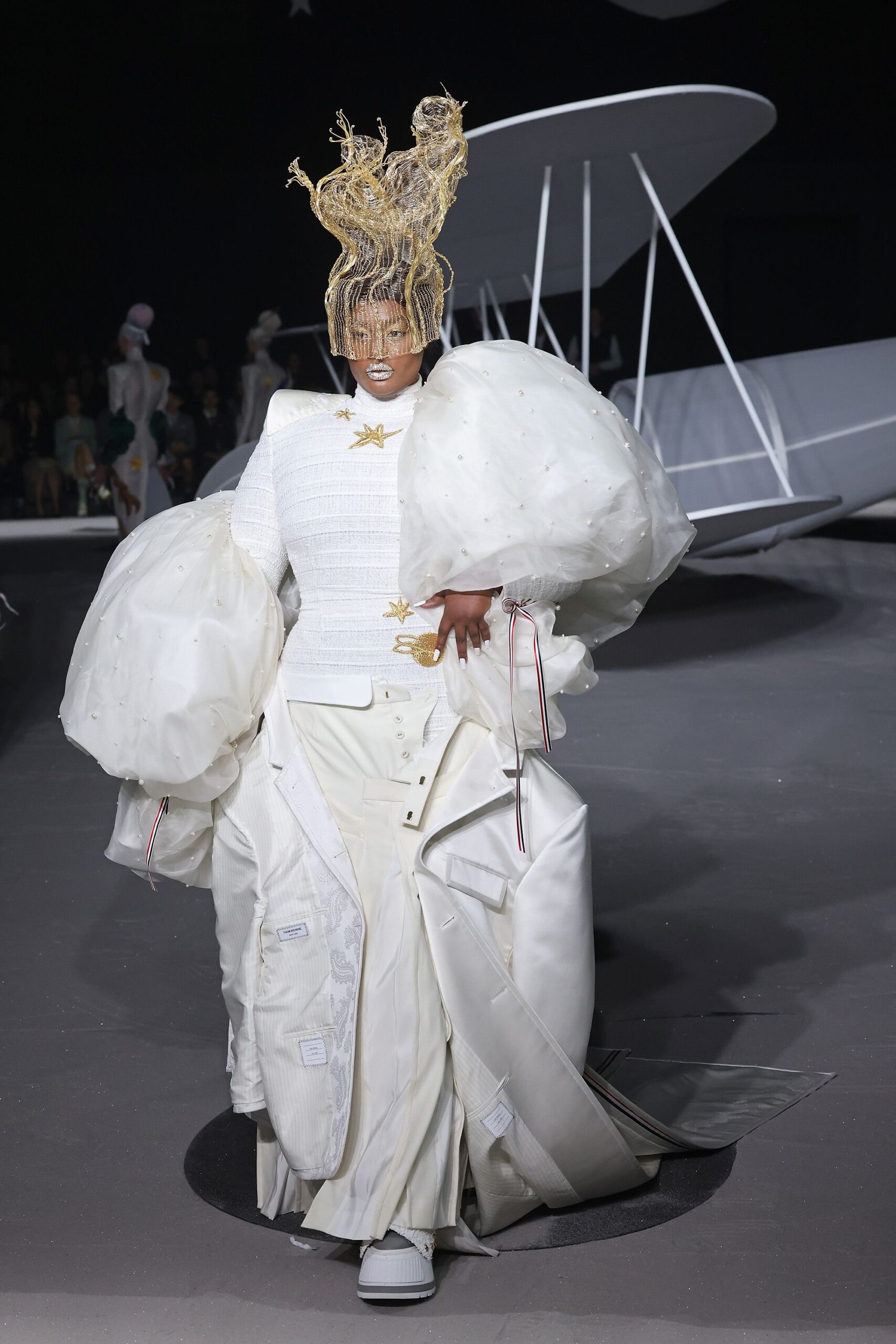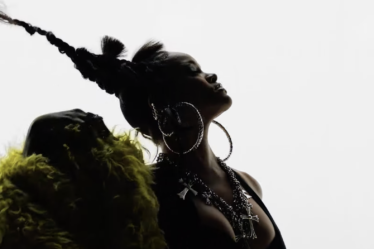
Hours before the official start of New York Fashion Week, model Georgina Burke seemed lukewarm about the days ahead. Burke, who is signed with IMG Models and has been a curve model for 13 years, said her hesitance was rooted in the fact that brands tend to reserve only a handful of spots for models like her – and that this season, those opportunities were even rarer than usual.
“They have one or two looks for plus girls. And we often can’t buy the clothes from the brand at all,” said Burke, who walked in the Veronica Beard show on Tuesday evening along with two other curve and mid-size models (she noted she would be able to purchase the camel-coloured trench she wore down the runway when it comes out).
After a half decade where plus-size models, typically defined as size 14 and above, were an increasingly common sight on the runway, their relative absence in New York this past week was a source of conversation on the sidelines of shows and on social media.
“I fear this fashion week may be the steepest decline yet.” said Nadia Boujarwah, co-founder and chief executive officer of size-inclusive retailer Dia&Co, which launched a collection of Diane von Furstenburg wrap dresses at the start of New York Fashion Week.
Theories abound about the reason behind the shift. Some see it as a symptom of a broader cultural pivot, where celebrities bragging about their skinnier frames, and the sudden ubiquity of diet drugs can make it feel like the past decade-plus of messaging on body positivity never happened. Others point to more industry-specific causes, including an uptick in casting of mid-sized (size 8-10) models that may have come at the expense of slots once reserved for their plus-size peers.
The recently concluded week wasn’t a total return to the days of heroin chic. Plus-size model Precious Lee closing the Thome Browne show “was a moment,” Burke said, and Carolina Herrera and Coach were among the prominent brands to include mid-sized or plus-size models on the runway. BIPOC designers in particular have continued to push for size inclusivity and this season varying body types were seen at Bohn Jsell, Sergio Hudson, Kim Shui and Prabal Gurung.
But size inclusivity advocates say there’s been a noticeable trend away from casting curve models, beginning last season and accelerating in the recent round of shows. The stakes are higher than which models get which jobs. Fashion week runways influence advertising campaigns, red carpets and retail merchandising strategies; less visibility for plus-size models may trickle down to less luxury fashion being produced, whether for celebrities or ordinary shoppers.
The runway represents a designer’s vision as a whole; a chance to story tell with a variety of main characters. The growing number of curve models cast over the last five years had raised hopes that body diversity was more than the latest industry fad. The fact that years of uneven but measurable progress could potentially be wiped out in a single season is disheartening, said Gary Dakin, a partner at JAG Models.
“This season proves how cyclical fashion is,” he said. “The pendulum has swung again, and it’s concerning to think about what this says to the everyday consumer.”
Solving the Mystery
The number of plus-size models – typically defined as size 14 or above – walking in New York rose steadily over the last five years, from just four in the Autumn/Winter 2016 season to 51 last February, according to The Fashion Spot.
That mirrored the rise of the body positivity movement, which put pressure on luxury designers to offer clothes in a wider size range. Sending a few plus-size models down the runway became a statement, and then a bona fide trend. Some believed it could even be a new normal (at least in New York; designers in Milan and Paris never fully embraced the concept). A few labels, including Christian Siriano and Chromat, built their brands partly around dressing bodies of all shapes and sizes.
Recent cultural trends have shifted the fashion conversation around size in a different direction. There’s the ongoing fascination with all things Y2K – and the skinny, long-torsoed body type low-rise jeans are designed to flatter. Boujarwah cited the Ozempic craze, saying that the ubiquity of the prescription diabetes drug with a known side effect of weight loss is quickly reigniting weight bias conversations.
Others say it’s not as simple as designers reverting to the rigid body standards of 20 years ago. Becca Thorpe, an agent at Next Models, said casting directors this season called in plenty of “above straight size” models, but the balance had tilted more toward mid-size models (generally size 8-10) as opposed to models size 14 and above.
“We saw outstanding success in getting new faces who are above sample in front of casting directors,” Thorpe said. “Designers booked more 8-10s than they did sizes 14-16 and just didn’t include more than one type of above sample size model on the runway.”
Whatever the cause, runway casting was a hot topic online throughout the week.
Candice Huffine, a model who has walked the runway for Prabal Gurung, Christian Siriano and Sophie Theallet as well as appeared on the cover of Italian Vogue and on the pages of CR Fashion Book, American Vogue and W, posted an Instagram story Tuesday questioning why designers who had previously used curve models in their shows were now “omitting them from the conversation entirely this year.”
Huffine was working in Australia during this season of New York Fashion Week but says that the show recaps she witnessed online left her disappointed with the lack of curve models.
“This industry yields the great power to spearhead everything we see, buy, consume and celebrate,” Huffine shared via email. “I find it incredibly reckless to continue turning a blind eye to what the elimination of body diversity at the forefront does to women as a whole.”
In a tweet, New York Times fashion critic Vanessa Friedman wrote that she was “distracted by the extreme skinniness of some of the models in Jason Wu’s show.” Replies expressed similar concerns or snapped back that she was engaging in body shaming, some of which Wu himself retweeted.
Friedman clarified her point in subsequent tweets saying, “Mr. Wu is one of the few runway designers who does also offer a size inclusive line. This, combined with the wider conversation around size inclusivity – which is currently more lip-service than actual, made the fact that many of the models in this show were very thin stand out, as well as the fact there were no midsize or curve models at all.”
Selling Curves
Runway representation came alongside increased attention to plus-size shoppers. Luxury options in sizes 2XL or higher remain rare relative to mass retailers, but new styles at online retailers in the US and UK did increase 29 percent in the second half of 2022 compared with a year earlier, according to Edited.
Boujarwah said she feared reversals for curve models on the runway will lead to a similar shift in retail.
“This is the beginning of a slippery slope,” she said. “If curve models don’t show the clothes, buyers won’t buy the full-size range.”
Guyanese-American designer Marrisa Wilson, says she cast her NYFW show to reflect her customers, who can shop her line in sizes 0-20. She doesn’t stop there though: she said she brings sales data from her e-commerce business to convince skeptical buyers that there’s a market for clothes at the higher end of that range.
“It’s about catering to people who are actually supporting the development and the growth of the business,” she said. “So it’s a financial decision as well.”
Sheena Butler-Young contributed to this article.



